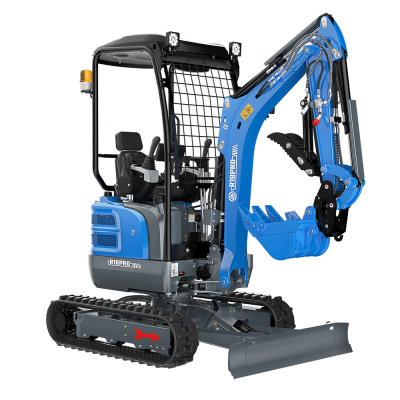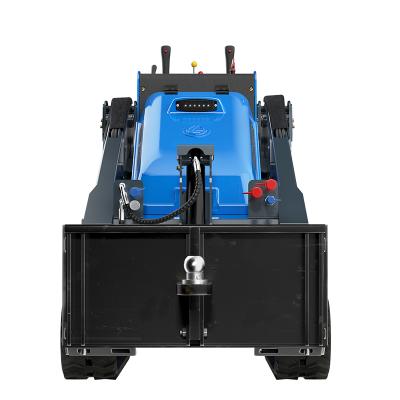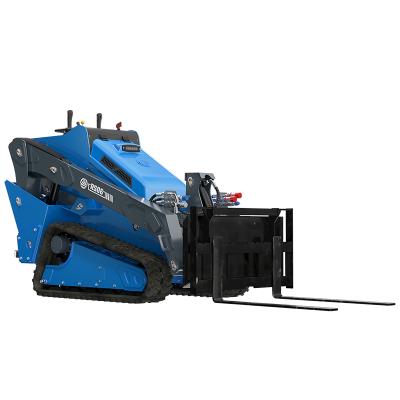How much can you make a year with a skid steer
If you're considering starting a business with a skid steer, you're probably wondering about the potential earnings. Skid steers are versatile machines used in construction, landscaping, farming, and more. They can be a significant investment, but with the right strategy, they can also be a lucrative source of income. In this article, we'll break down the factors that influence how much you can make annually with a skid steer and provide tips to maximize your earnings.
A skid steer is a compact, powerful machine with lift arms used to attach a variety of labor-saving tools or attachments. They are highly maneuverable, which makes them ideal for a range of tasks in tight spaces. This versatility is one of the reasons skid steers are a popular choice for different industries, from construction to agriculture. The ability to switch between attachments quickly means operators can perform multiple tasks in a single day, enhancing productivity and profitability.
The income you can make with a skid steer largely depends on how you use it, the demand for services in your area, and your pricing strategy. Generally, skid steers can be used for tasks such as excavation and grading, landscaping, snow removal, material handling, and demolition. Each of these tasks has its own set of requirements and rates, which can vary significantly based on the complexity of the job and the local market conditions. Understanding these nuances is essential for setting competitive prices and maximizing your revenue.
Several factors can affect how much you earn with a skid steer, including locati0n, experience, service offering, and marketing. Location plays a crucial role, as areas with high construction activity or harsh winters (for snow removal) can have higher demand for skid steer services. Urban areas may offer more opportunities for construction-related tasks, while rural areas might provide more agricultural work.
Experience is another critical factor; skilled operators who can efficiently complete tasks are more likely to command higher rates. Clients are often willing to pay a premium for experienced operators who can deliver quality results quickly. Diversifying the services you offer can attract more clients and increase your income potential. Offering a variety of services not only broadens your customer base but also helps mitigate the risks associated with seasonal demand fluctuations.
Marketing is essential for reaching potential clients and growing your business. Effective marketing strategies can help you stand out in a competitive market. Whether through online advertising, word of mouth, or community engagement, building a strong brand presence can significantly impact your earnings. Understanding your target market and tailoring your marketing efforts to meet their needs can lead to sustained business growth.
The amount you can charge for skid steer services varies widely, but here are some general guidelines. Many operators charge between $50 to $150 per hour, depending on the complexity of the task and regional market rates. For tasks that require specialized skills or equipment, such as precision grading or demolition, you might be able to charge at the higher end of this range. Understanding your local market and setting your rates accordingly is crucial for attracting clients while ensuring profitability.
Project-based pricing can also be a strategic approach, especially for larger projects. For these, you might negotiate a flat fee, which can be beneficial if you're able to complete tasks quickly and efficiently. This pricing model can appeal to clients who prefer a clear cost structure without the variability of hourly rates. Additionally, if you own a skid steer but don't want to operate it, you can rent it out. Skid steer rentals can range from $200 to $500 per day, providing a passive income stream while minimizing wear and tear on the machine.
To give you a rough idea of potential earnings, let's consider a few scenarios. As a part-time operator working 20 hours per week at an average rate of $100 per hour, you could earn approximately $104,000 annually. This scenario is ideal for those looking to supplement their income or test the waters before committing to a full-time operation.
On the other hand, a full-time operator working 40 hours per week at the same rate could yield around $208,000 per year. This commitment requires a robust client base and a strategic approach to scheduling and service delivery. For those interested in generating income without direct involvement, renting your skid steer for $300 per day, two days a week, could generate about $31,200 annually. This option is particularly appealing for individuals with multiple business ventures or those who prefer passive income.
These are basic estimates, and actual earnings can vary based on the factors mentioned earlier. Each operator's circumstances will differ, and adapting your business model to fit your specific context is key to maximizing earnings.
Offering a range of services can help you attract more clients and increase your income. Consider adding services like landscaping, which includes clearing land, leveling, and installing hardscapes. Landscaping is a year-round service that can provide steady work regardless of season. Snow removal is another lucrative service to offer, particularly in areas with harsh winters. Providing snow plowing and removal services during winter can ensure that your business remains profitable even in the colder months.
Construction-related services, such as assisting in various tasks like trenching, grading, and earthmoving, can also be highly profitable. These services often command higher rates due to their complexity and the expertise required. By diversifying your services, you not only enhance your business resilience against seasonal fluctuations but also tap into new revenue streams.
Attachments can significantly enhance the versatility of your skid steer. Some popular attachments include augers for drilling holes for posts or planting, brush cutters for clearing overgrown areas, and buckets for moving materials like soil, gravel, or debris. Each attachment opens up new possibilities for services you can offer, increasing your marketability and potential income.
Investing in the right attachments can expand your service offerings and justify higher rates. While the initial cost of these attachments can be high, they typically pay for themselves by allowing you to take on a wider variety of jobs and charge premium rates. Carefully selecting attachments based on the demand and your target market will ensure a good return on investment.
Networking can play a crucial role in the success of your skid steer business. Building relationships with local contractors, landscapers, and real estate developers can lead to more job opportunities. These professionals are often in need of reliable skid steer services and can become repeat clients if they trust your work. Attend industry events, join local business groups, and use social media to connect with potential clients. Establishing yourself as a go-to service provider in your community can lead to steady work and referrals.
Developing a robust network also provides valuable insights into market trends and opportunities. Engaging with peers and industry leaders can help you stay informed about the latest techniques and technologies, enhancing your service offerings. Moreover, networking can lead to collaborative opportunities, such as joint ventures or partnerships, which can further expand your business reach.
Effective marketing is essential to growing your business. Consider strategies like creating a professional website and using social media to showcase your work and attract clients. A well-designed website can serve as your business's digital storefront, providing potential clients with information about your services, rates, and contact details. Social media platforms offer an opportunity to engage with your audience, share project updates, and receive client feedback, all of which can enhance your brand's reputation.
Local advertising can also be effective, especially when targeting specific communities or regions. Advertise in local newspapers, community boards, and online directories to reach potential clients who might not be active online. Additionally, referrals are a powerful marketing tool. Encourage satisfied clients to refer your services to others by offering discounts or incentives for referrals. Word-of-mouth recommendations are often the most trusted form of advertising and can significantly boost your business.
Starting a skid steer business requires an initial investment in the machine and attachments. New skid steers can cost anywhere from $20,000 to $60,000 or more. This upfront cost is substantial, but financing options and used equipment can make it more manageable for budding entrepreneurs. Additionally, ongoing maintenance and repair costs should be factored into your budget. Regular maintenance is essential to ensure your equipment remains in good working condition, minimizing downtime and costly repairs.
Proper maintenance also extends the lifespan of your skid steer, providing a better return on investment over time. Establishing a maintenance schedule and keeping detailed records can help you plan for these costs and avoid unexpected expenses. Additionally, understanding warranty and service agreements can save money and reduce stress related to equipment upkeep.
The level of competition in your area can impact your ability to secure jobs and set prices. Research local competitors to understand their offerings and pricing strategies. This knowledge will help you position your services competitively and identify potential gaps in the market that you can exploit. Differentiating your business by offering unique services or superior customer service can help you stand out in a crowded market.
Effective branding and customer service are critical in competitive environments. Building a reputation for reliability and quality can help you retain clients and attract new ones. Consider seeking feedback from clients to improve your services continually and address any issues promptly. By staying agile and responsive to market demands, you can maintain a competitive edge.
Some skid steer services may be seasonal, such as snow removal or landscaping. Consider how seasonal demand might affect your income and plan accordingly. Diversifying your service offerings can mitigate the impact of seasonal fluctuations, ensuring a more stable income throughout the year. For instance, offering both summer landscaping and winter snow removal services can keep your business running year-round.
Additionally, strategic financial planning is essential to managing seasonal variations in income. Building a financial cushion during peak seasons can help cover expenses during slower periods. Understanding your business's cash flow and adjusting your operations accordingly will help maintain financial stability and ensure long-term success.
A skid steer business has the potential to be a profitable venture with the right approach. By understanding the factors that influence earnings, diversifying your services, and investing in the right equipment, you can maximize your annual income. With dedication and strategic planning, your skid steer business can thrive.
Remember, success in this field requires not only hard work but also smart business decisions and effective marketing. Whether you operate the skid steer yourself or rent it out, the opportunities for income are substantial if you play your cards right. By staying informed, continuously improving your skills, and adapting to market changes, you can build a successful skid steer business that offers both financial rewards and personal satisfaction.


